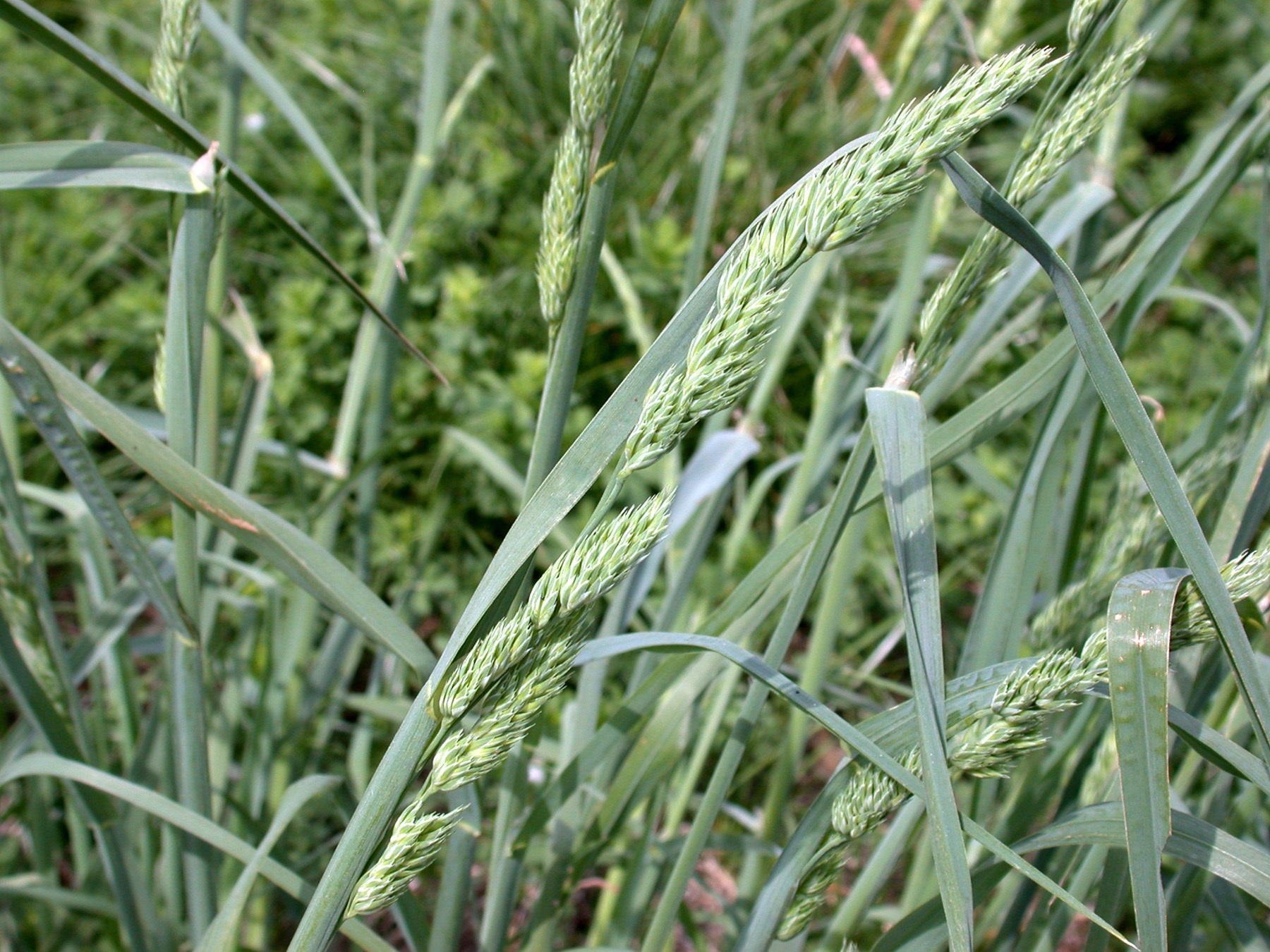Every year I hear complaints from producers about orchardgrass being stemmy when in a mixture with alfalfa or red clover and harvested as first-cutting hay. Orchardgrass became the prevalent cool-season grass to include in a mixture with alfalfa more than three decades ago; it replaced smooth bromegrass as the grass species of choice because smooth bromegrass cannot survive the rigor of four cuttings in a growing season. As we learned more about forage quality-animal performance relationships, many producers desired four alfalfa or alfalfa-orchardgrass harvests in a season to obtain higher quality hay for their livestock.

A late-maturing orchardgrass is the best choice when alfalfa or red clover are part of a mixture and the intentions are hay or silage. (Photo Credit: Purdue University Diagnostic Training and Research Center)
What producers must realize is that there is a vast difference in maturity among orchardgrass varieties on a given date in the spring. Orchardgrass maturity stage notes for nine varieties were taken in late May many years ago at the Agronomy Center for Research and Education, West Lafayette. Maturity stage ranged from an average of 3.75 nodes able to be felt by touch (preheading) to pollen shed.
Early maturing varieties do not match up well when grown in a mixture with alfalfa or red clover. Alfalfa and red clover may be in early- to mid-bud when an early-maturing orchardgrass is shedding pollen. As forages progress from vegetative to seed producing stages, they increase in fiber content and leaf-to-stem ratio decreases; thus, they do become “stemmy” and of lower nutritional value. Ideally, a grass-legume mixture when harvested as hay or silage would be at similar growth stage and not have a week or more difference in maturity.
A late-maturing orchardgrass is the best choice when alfalfa or red clover are part of a mixture and the intentions are hay or silage. An early-maturing orchardgrass is best utilized when grown singly or used as pasture with the intentions of beginning the grazing season at an earlier date than what can be accomplished with other forage species or later maturing orchardgrass varieties.
Many producers will be selecting alfalfa and orchardgrass varieties soon for an August seeding. Make sure to ask the seed personnel about the maturity of the orchardgrass varieties they have on hand to meet your objectives.


